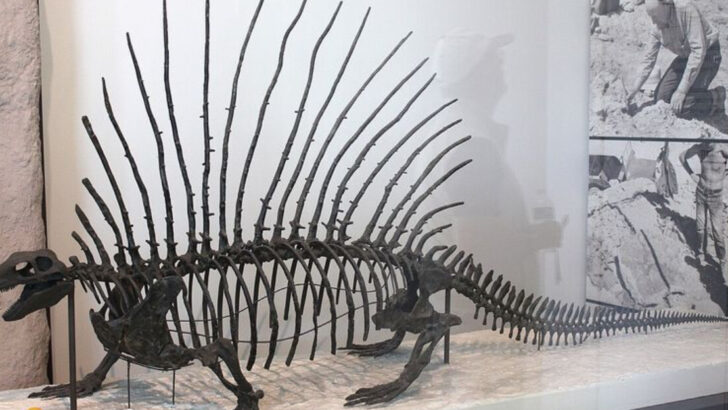Long before dinosaurs took their first steps, the Earth was already home to a stunning variety of prehistoric reptiles. These ancient creatures ruled the land and sea, showcasing mind-blowing adaptations that paved the way for the world we know today.
From the towering and terrifying to the strangely beautiful, these reptiles weren’t just the ancestors of the dinosaurs—they were formidable beings in their own right. Their diverse forms and survival skills make them stand out in history, each one a testament to nature’s creativity and resilience.
Get ready to travel back in time as we uncover 18 remarkable prehistoric reptiles that thrived long before the age of dinosaurs. You’ll be amazed by their diversity, their dominance, and their incredible ability to survive in a world vastly different from our own.
Dimetrodon
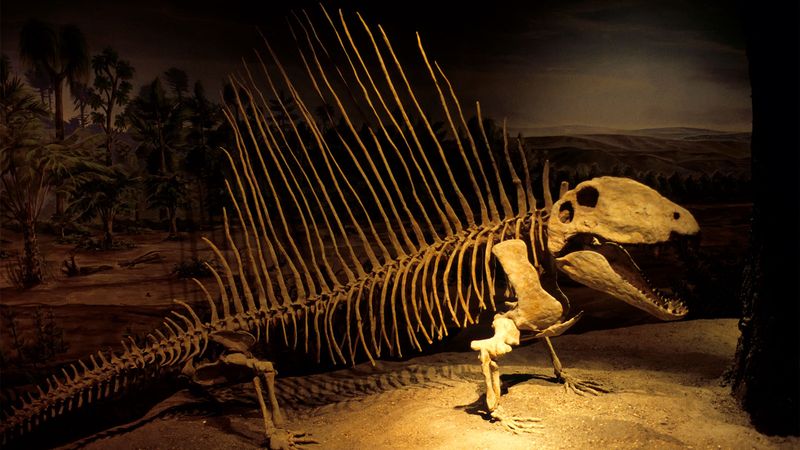
Dimetrodon, often mistaken for a dinosaur, was a prominent synapsid around 295 million years ago. Sporting a distinctive sail on its back, Dimetrodon’s appearance was both intimidating and fascinating.
The sail likely served multiple purposes, such as thermoregulation and display. Living in swampy environments, Dimetrodon was a top predator of its time, preying on fish and small reptiles.
Its elongated, serrated teeth made it well-suited for hunting. As one of the earliest known carnivorous reptiles, Dimetrodon played a crucial role in the ecosystem. Its existence highlights the evolutionary diversity before dinosaurs.
Edaphosaurus
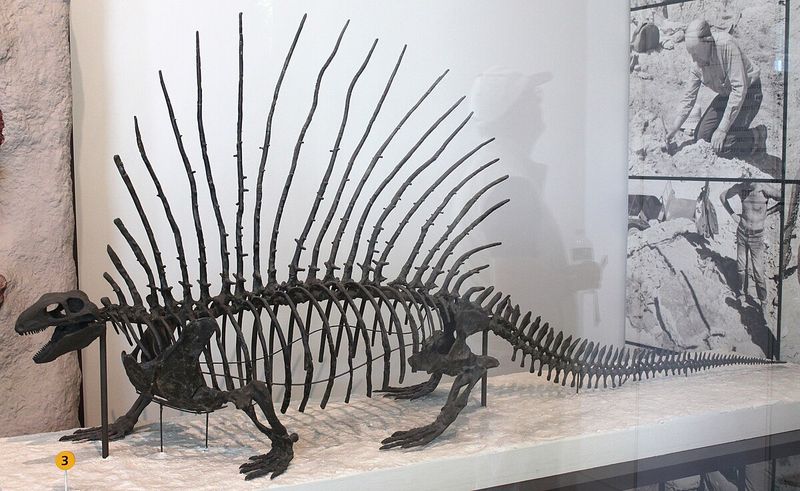
Edaphosaurus was a fascinating herbivorous reptile that lived during the late Carboniferous to early Permian periods, around 300 million years ago. Known for its large sail-like structure on its back, Edaphosaurus had a unique physiology.
The sail might have been used for thermoregulation or social interactions. Unlike its carnivorous contemporary Dimetrodon, Edaphosaurus was a peaceful browser of low vegetation.
Its peg-like teeth were perfect for a plant-based diet. The presence of Edaphosaurus showcases the diversity of life forms before dinosaurs, marking an important phase in reptilian evolution.
Eryops
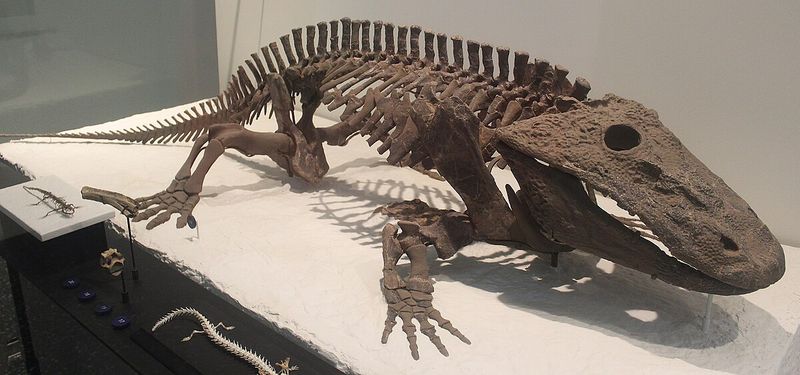
Eryops, an ancient amphibious reptile, thrived about 295 million years ago in the Permian period. Its robust body and strong limbs made it well-adapted for both land and water environments. Eryops was known for its powerful jaws lined with sharp teeth.
Feeding primarily on fish and smaller amphibians, Eryops played a vital role in its ecosystem as a predator. Its adaptability to different habitats allowed it to survive environmental changes.
As an early example of amphibious reptiles, Eryops highlights the evolutionary experiments that occurred before dinosaurs emerged.
Captorhinus
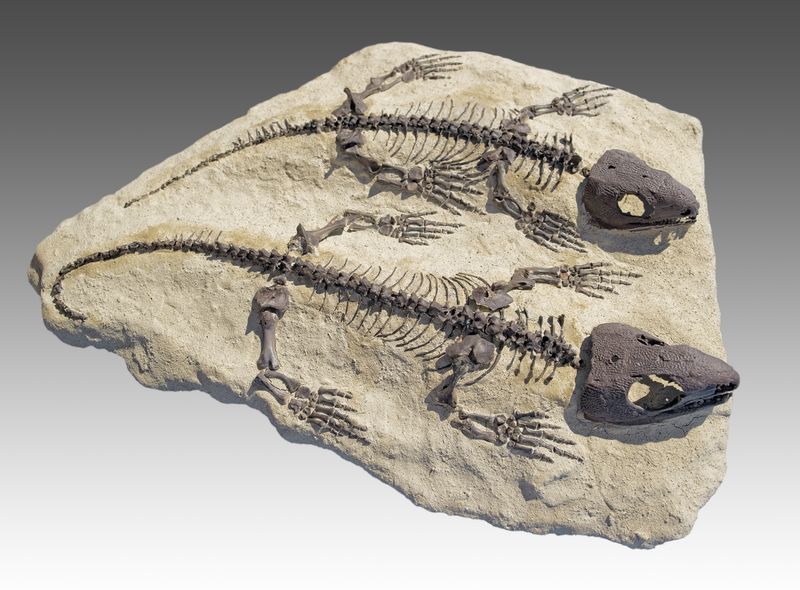
Captorhinus was a small, agile reptile that lived around 290 million years ago. Known for its multiple rows of teeth, Captorhinus was well-suited to a varied diet, including insects and plants.
Its lightweight and flexible body allowed it to navigate rocky terrains with ease. As one of the earliest reptiles to develop a more advanced jaw structure, Captorhinus played a pivotal role in reptilian evolution.
Its ability to exploit diverse food sources and habitats marked a significant evolutionary advantage. Captorhinus represents an important step in the transition from simple to more complex reptilian forms.
Seymouria
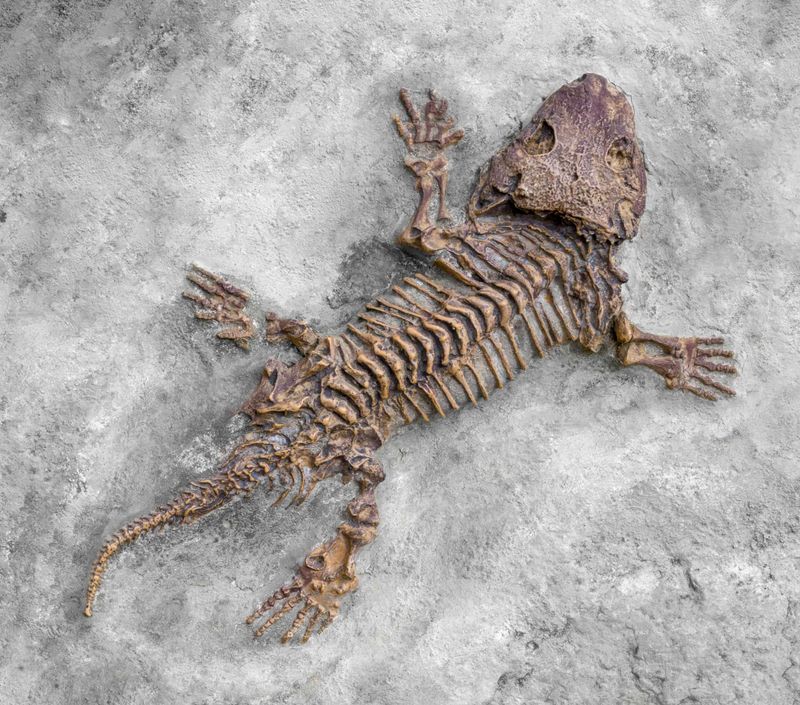
Seymouria, a transitional form between amphibians and reptiles, lived around 280 million years ago. It had a body structure resembling reptiles but retained some amphibian characteristics.
Seymouria was well-adapted to terrestrial life, while also being capable of living in water. Its limbs and vertebral column were more developed compared to earlier amphibians, allowing for greater mobility on land.
Seymouria’s existence is a testament to the evolutionary bridge between aquatic and terrestrial life forms, showcasing how nature experimented with different life strategies before the rise of dinosaurs.
Pareiasaurus
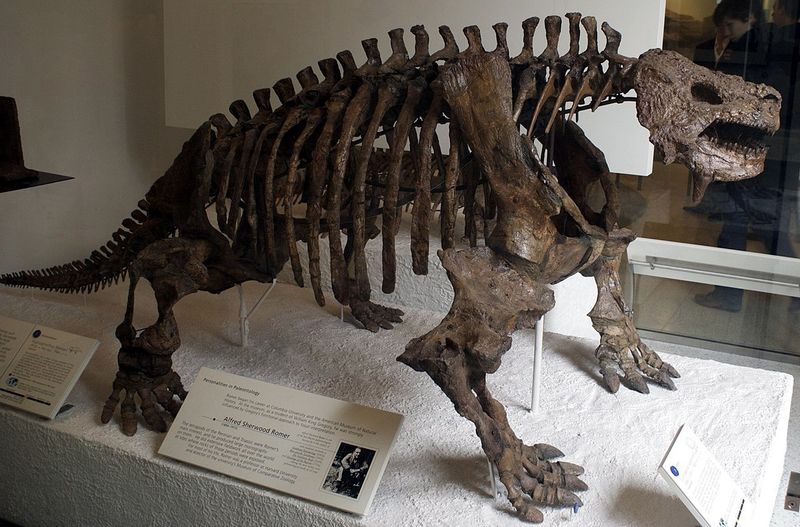
Pareiasaurus was a large, heavily built reptile that roamed the Earth around 260 million years ago. Its bulky body and bony armor gave it a distinct appearance, and it primarily fed on tough vegetation.
Known for its distinctive skull with protruding cheek bones, Pareiasaurus was an essential herbivore in its ecosystem. Its presence indicates the complexity of pre-dinosaur herbivorous niches.
The adaptation to a herbivorous lifestyle helped Pareiasaurus survive in diverse environments, highlighting the breadth of reptilian evolution before dinosaurs emerged.
Diadectes
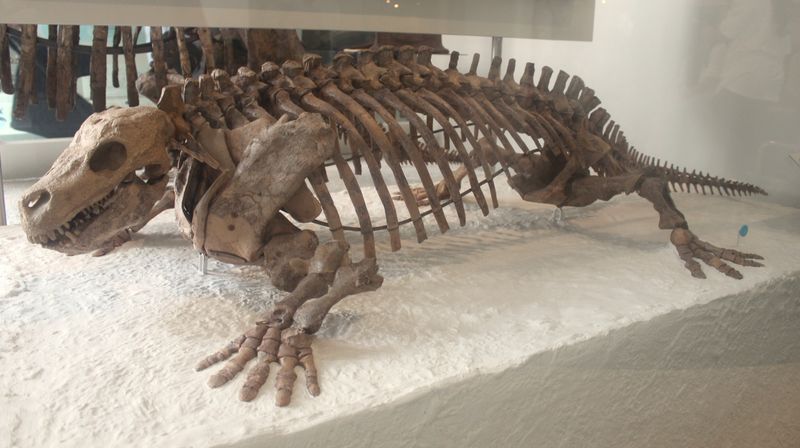
Diadectes was a significant herbivorous reptile that lived around 290 million years ago. It is notable for being one of the first reptiles to adapt to a fully herbivorous diet, feeding on ferns and other plants.
Its large, barrel-shaped body and strong limbs made it well-suited for a terrestrial lifestyle. Diadectes’ teeth were specialized for grinding plant material, showcasing the diversity of dietary adaptations in early reptiles.
This evolutionary step towards herbivory highlights the intricate changes within ecosystems before the dominance of dinosaurs.
Paleothyris

Paleothyris was a small, agile reptile that lived around 300 million years ago during the Late Carboniferous period. Its sleek, lizard-like body was adapted for quick movements through dense vegetation.
As an insectivore, Paleothyris played a critical role in controlling insect populations. Its sharp teeth and keen eyesight made it an adept hunter.
The presence of Paleothyris highlights the diversity of early reptilian life forms, illustrating the varied ecological niches reptiles began to fill long before dinosaurs appeared on the scene.
Scutosaurus
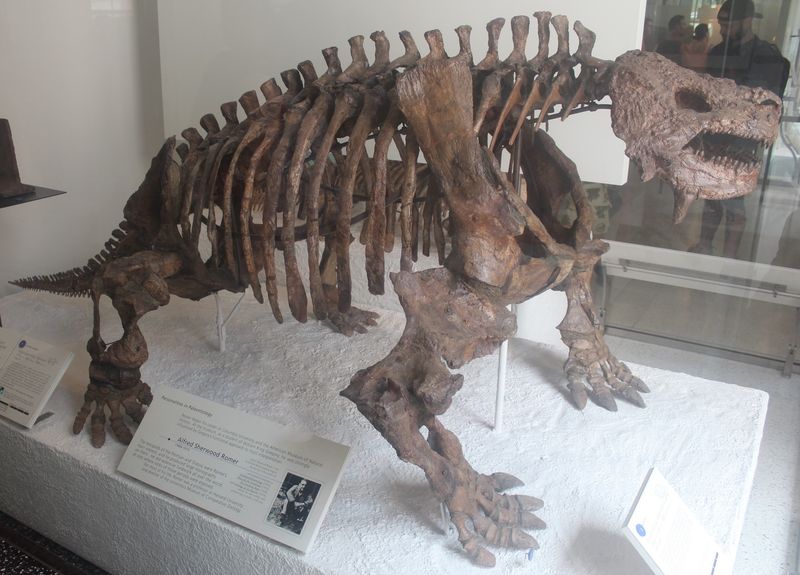
Scutosaurus was a heavily armored reptile that lived around 250 million years ago. Its name means “shield lizard,” a fitting description for its robust body covered in bony plates.
This herbivore primarily fed on tough, fibrous plants, using its strong jaws to chew and process vegetation. Scutosaurus’ unique adaptation to a heavily armored lifestyle highlights the various evolutionary paths reptiles explored before dinosaurs.
Its presence in prehistoric ecosystems demonstrates the complexity and diversity of life forms that existed in the pre-dinosaur era.
Protorothyris
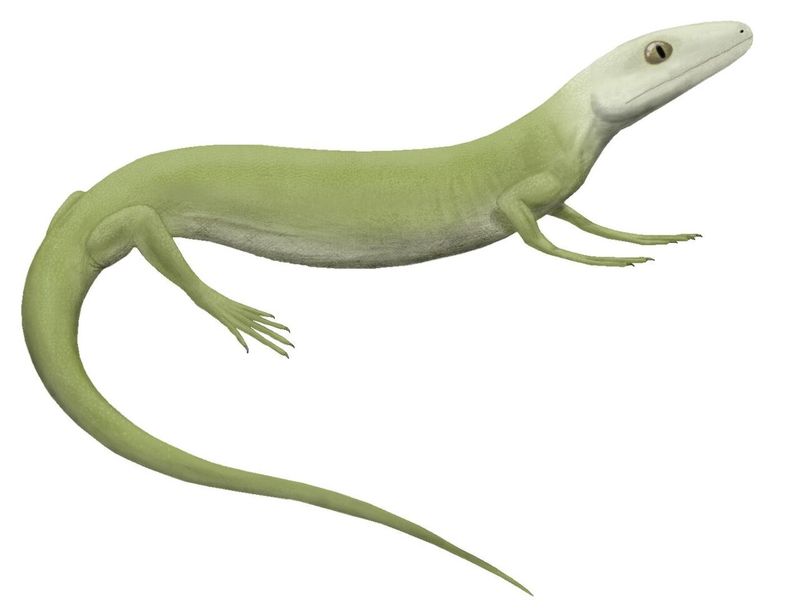
Protorothyris was a small, early reptile that lived around 300 million years ago. Its slender body and elongated tail allowed for agile movements in open habitats. Protorothyris is often regarded as one of the earliest true reptiles.
Feeding on insects and small invertebrates, Protorothyris played an important role in the food chain. Its existence highlights the transition from amphibian ancestors to more adapted terrestrial reptiles.
By occupying diverse ecological niches, Protorothyris represents an essential step in the evolution of reptiles, setting the stage for more complex reptilian life forms.
Casea

Casea was a small herbivorous reptile that lived around 270 million years ago during the Permian period. Its barrel-shaped body and short limbs were well-suited for a low-browsing lifestyle.
Feeding on soft vegetation, Casea was an important part of the ecosystem, contributing to the cycling of plant material. Its unique body structure and dietary habits highlight the diversity of reptilian adaptations prior to the dominance of dinosaurs.
Casea’s existence emphasizes the evolutionary experimentation and ecological roles occupied by reptiles before the rise of larger, more dominant species.
Varanops
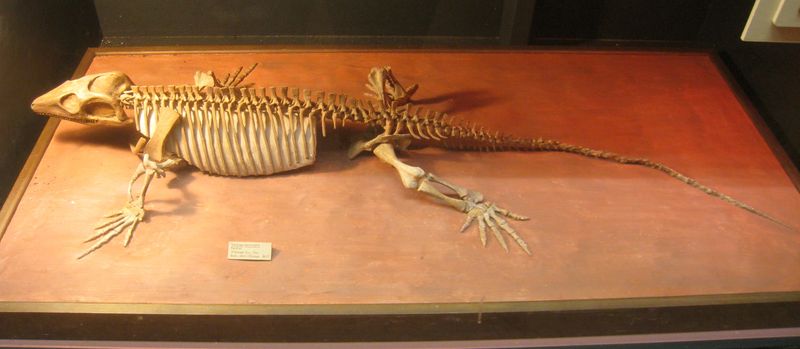
Varanops was a sleek, carnivorous reptile that lived around 270 million years ago. Known for its agile, lizard-like body, Varanops was an effective predator in its environment.
Feeding on smaller reptiles and insects, Varanops thrived in various habitats, from forests to open plains. Its sharp teeth and quick reflexes made it a formidable hunter.
The presence of Varanops showcases the diversity of predatory niches occupied by reptiles before dinosaurs, illustrating the complex web of life that existed in prehistoric ecosystems.
Estemmenosuchus
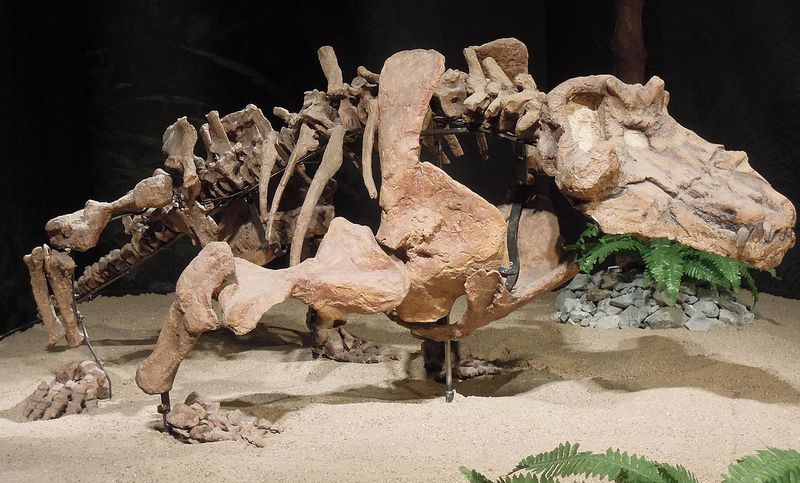
Estemmenosuchus was a large, enigmatic reptile that lived around 265 million years ago. Known for its distinctive horn-like protrusions on its skull, Estemmenosuchus was a unique herbivore in its time.
Feeding on ferns and other plants, this reptile thrived in wetland environments. Its unusual appearance and dietary habits highlight the diverse evolutionary paths explored by prehistoric reptiles.
The existence of Estemmenosuchus emphasizes the variety of life forms that populated the Earth before the arrival of dinosaurs, showcasing nature’s creativity in adapting to different ecological niches.
Moschops
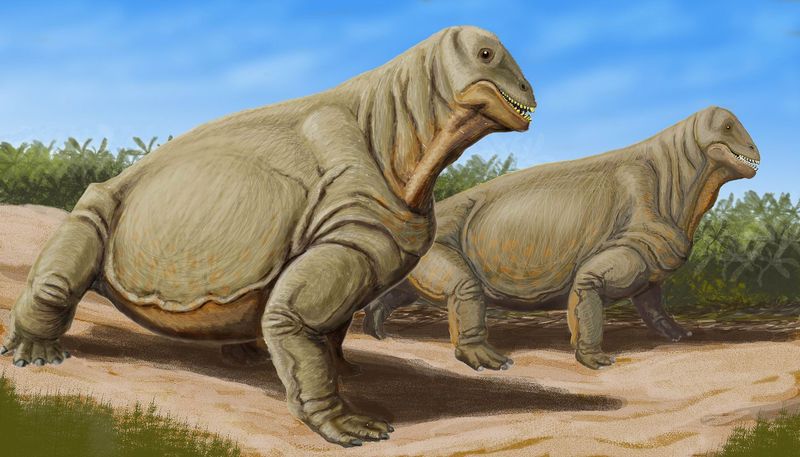
Moschops was a robust, herbivorous reptile that lived around 260 million years ago. Its stout body and thick skull made it well-adapted for a life of grazing on tough vegetation.
As a dominant herbivore of its time, Moschops played a crucial role in shaping the vegetation and landscape of its ecosystem. Its unique adaptations highlight the diversity of herbivorous reptiles before dinosaurs.
The presence of Moschops in prehistoric ecosystems underscores the complex interactions and evolutionary experiments that occurred long before the age of dinosaurs.
Nyctiphruretus
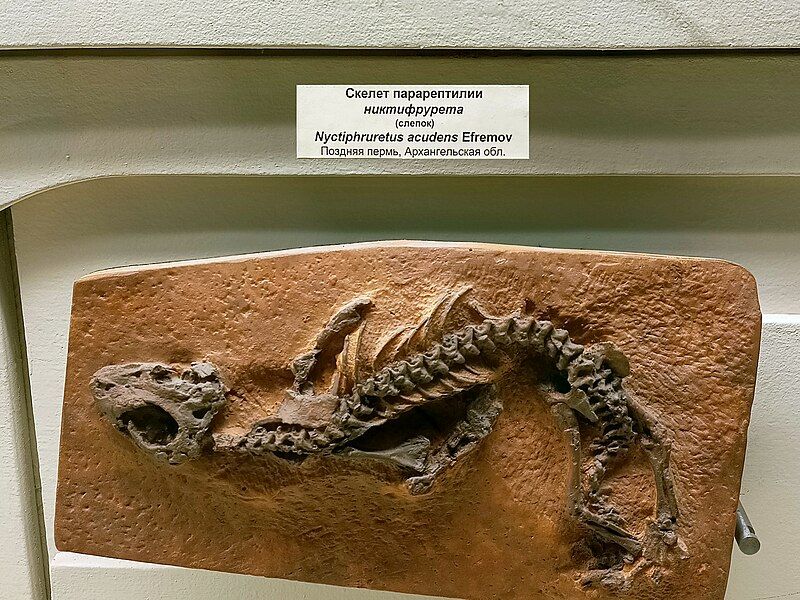
Nyctiphruretus was a small, peculiar reptile that lived around 260 million years ago. Known for its distinctive skull with openings, Nyctiphruretus had a unique appearance.
Feeding on insects and small invertebrates, it inhabited dry environments where it could navigate easily. Nyctiphruretus’ existence highlights the diversity of reptilian adaptations before dinosaurs.
Its specialized features and ecological niche emphasize the broad range of evolutionary experiments that took place in the pre-dinosaur era, showcasing the adaptability and variety of early reptiles.
Tetraceratops
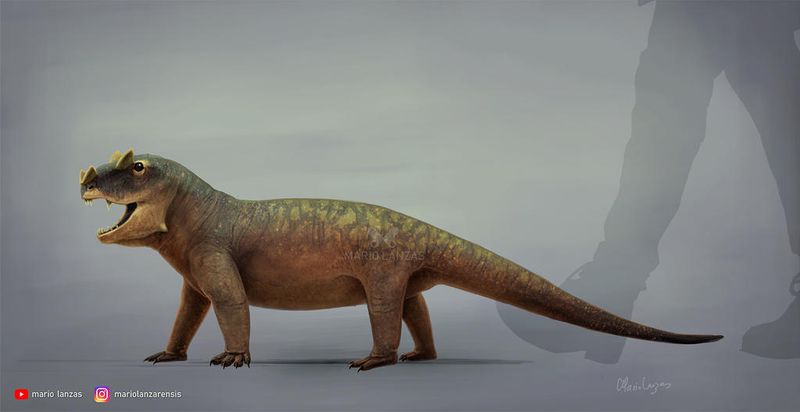
Tetraceratops was a small, intriguing reptile that lived around 290 million years ago. Characterized by its horn-like structures on its skull, it presents an early example of such adaptations.
Its diet likely consisted of insects and small vertebrates, thriving in lush forest environments. Tetraceratops’ distinctive appearance and lifestyle highlight the experimental nature of reptilian evolution before dinosaurs.
By occupying a unique niche, it showcases the diversity and adaptability of prehistoric reptiles, providing insight into the evolutionary paths that were explored long before more familiar reptilian giants roamed the Earth.
Milleretta

Milleretta was a small ancestral reptile that lived around 260 million years ago. With its elongated body and sharp claws, it was well-equipped for life in a dry, rocky landscape.
Feeding on insects and small invertebrates, Milleretta played a vital role in its ecosystem. Its adaptability to challenging environments and diverse habitats underscores the evolutionary versatility of early reptiles.
Milleretta’s presence in prehistoric landscapes highlights the range of niches occupied by reptiles before dinosaurs, illustrating the broad spectrum of life forms that existed during this fascinating period of Earth’s history.
Chronoperates
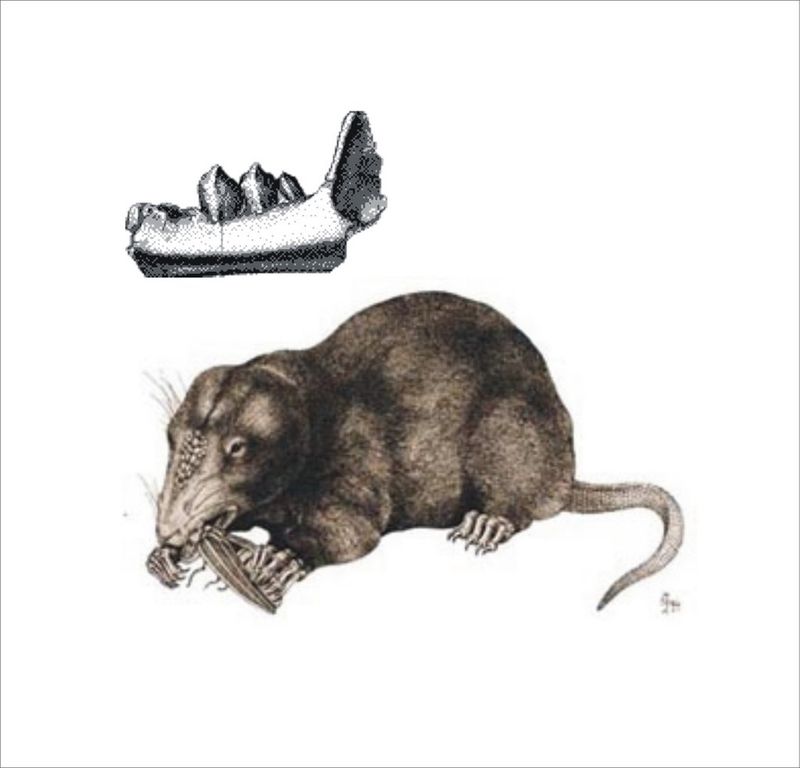
Chronoperates was a small, ancient reptile known for its unique jaw structure, living around 250 million years ago. Its specialized teeth suggest a varied diet, possibly including insects and small vertebrates.
Inhabiting forested areas, Chronoperates thrived in environments rich with food resources. Its existence underscores the diversity of reptilian life forms before the dominance of dinosaurs.
By adapting to specific ecological niches, Chronoperates exemplifies the evolutionary experimentation that characterized the pre-dinosaur era, showcasing the wide range of adaptations that early reptiles explored.

